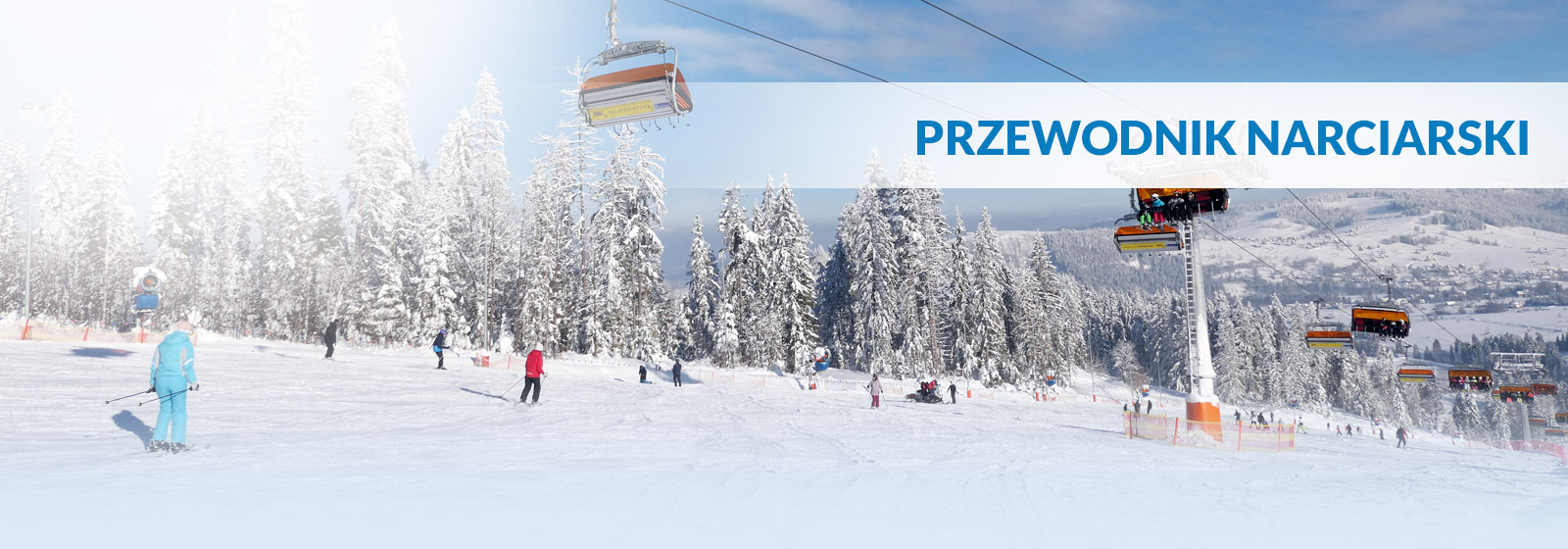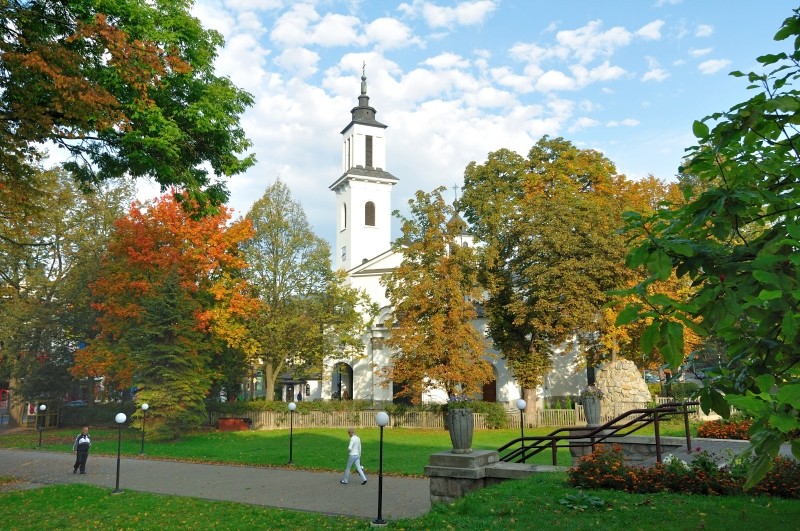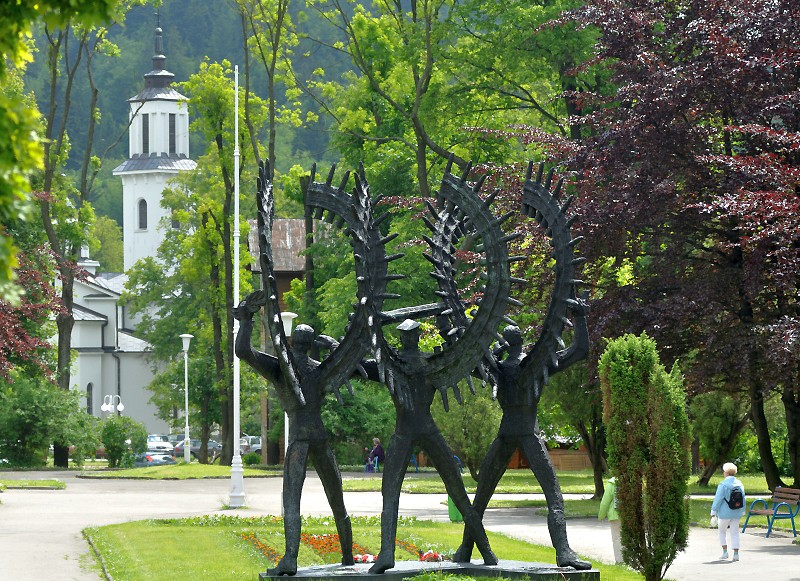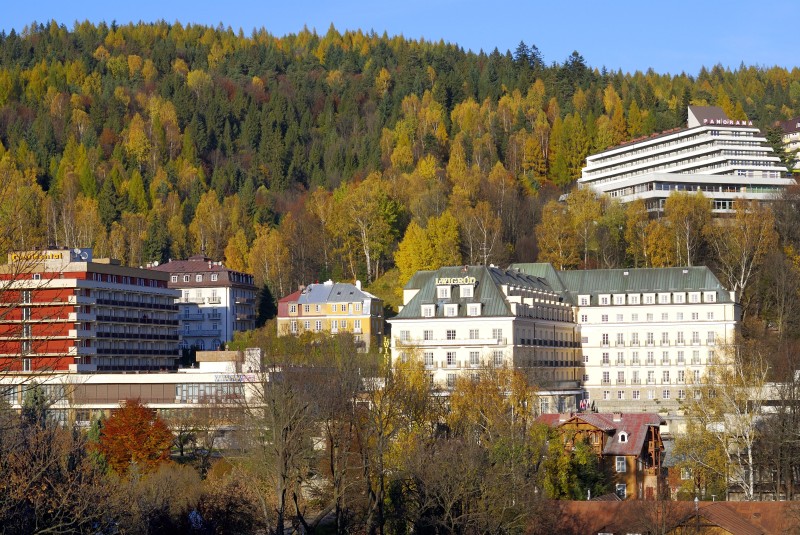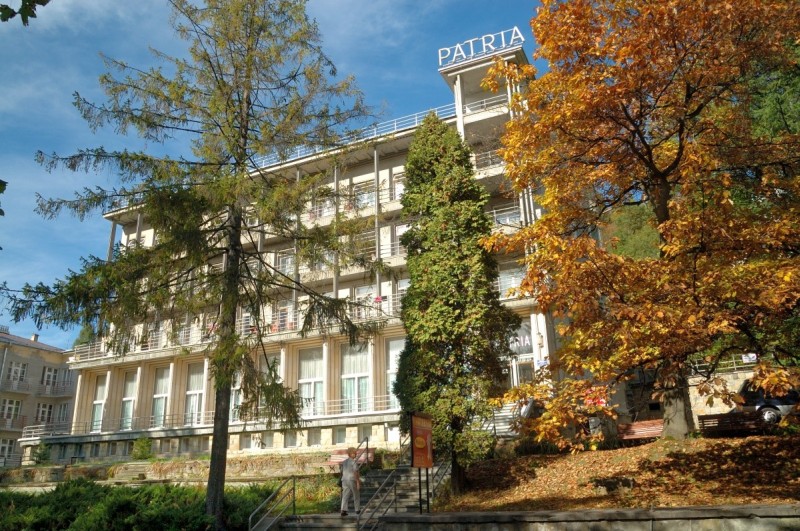The Church of the Assumption of Virgin Mary is located at the intersection of Zdrojowa, Pilsudski and church streets. Built in the years 1887-1892, it was designed by John Zawiejski in the early Italian Renaissance style and consecrated ten years later by Leon Wałęga, the Bishop of Tarnów. In the years 1932-1935 the church was rebuilt and enlarged according to the design of Franciszek Mączyński, a renowned Cracovian architect who was responsible for many years for the maintenance of the Mariacki Church in Kraków. The Assumption Church building has three main, longitudinal naves and a small traverse nave remaining from the original design. The chancel lodges a beautiful wooden statue of Our Lady of the Assumption made by Henryk Burka. Notable are also beautiful mosaics of Stations of the Cross and of the dome vault (the latter depicting biblical scenes) made by Stanislaw Jakubczyk. In front of the church there is a statue of Christ with a cross and the inscription: "Lord, have mercy on us!" (votive offering put up in 1895 to commemorate the 100th anniversary of the Third Polish Partition). Near stands the statue of Our Lady the Queen dating from 1896, and of the Suffering Lord Jesus, founded in 1953 by the Polish migrants from beyond the Bug river. Services at the church are held on Sundays and Holidays at 6:00, 7:30, 9:00, 10:30, 11:45, 15:00, 19:00 (the first Sunday of the month 16: 00; An hour of Mercy and the change of Rosary Decades), and on weekdays at 6:30, 7:00, 9:00, 10:00, 19:00 (in the winter at 17:00). From June to September, Mass at 10:00 a.m. in the park church instead of the parish church.
Roman Nitribitta’s Park stretches north-west from the church, along the Pilsudski’s Street. There are many beautiful flower bed compositions, park lines and benches. Notable is the large monument. ‘To the victorous defenders’, designed by prof. Bronislaw Chromy and unveiled in 1986. stands The Jan Kiepura Memorial unveiled in 2005 stands in front of the "Javorina" Cinema. The monument is a bronze figure of the singing artist, with his one hand raised. The faithful copy of the monument was put up two years ago in Sosnowiec, the hometown of the artist. The statue was designed by Tadeusz Markiewicz and the late Gabriel Karwowski from Warsaw. Several historical wooden mansions are still standing in the park surroundings. On the slopes of “Jasiennik”, several large Krynica spa hotels and resorts are located. ‘Lwigród’, (built between 1926-1929) is full of patriotic symbols. The building, designed by Eugene Czerwiński, exemplifies an architectural style of the interwar period favouring brick constructions. At that time, it was the only building in Krynica having a surgery room. The wooden cross situated across the street at the so-called “Siedlisko” commemorates the former cemetery of cholera outbreak victims. Other large health resorts include the 'Continental' Leśnik-Drzewiarz' and 'Panorama'.
The New Mineral Baths building located at the intersection of Zdrojowa, Pulaski and Pilsudski streets was designed by Wladyslaw Klimczak. The foundation stone for the building was laid by the Polish president Stanisław Wojciechowski. Its construction began in 1924 and was completed in 1928. The building has an interesting architectural structure, with an antique colonnade topped by a long balcony at the front site.
Along the Pulaski Street which leads to the Huzary Hill and further in the direction of the town Tylicz, many interesting places can be found. These include 'Soplicowo' (built in 1878 and originally called "The Warsaw Hotel"), the mansion "Dwór" (built 1860, once the house of Dr. Henry Ebers), the officer's summer resort 'Kasztelanka', the 'Patria' hotel (designed by Bohdan Pniewski and built in the years 1936-1938 at the request of the famous singer Jan Kiepura, Krynica’s frequent guest), the hotels "Motyl" and "Cechini", and some other interesting buildings. The slopes of the Huzary Hill, once the Pulaski Park with an amphitheater, a cafe and a bowling alley, are now much neglected, with most park lines overgrown with grass. The only exception is the relatively popular track to Mochnaczka through Huzary (coinciding with the red tourist trail). A mound with the Memorial of Kazimierz Pulaski and Bar Confederates overseeing the switchback road to Tylicz were erected at the initiative of dr. Franciszek Kmietowicz in 1926. The monument, destroyed during the German occupation was later reconstructed by the Polish Philatelic Association in Krynica, and unveiled on May 4th 1969. The top of the mound is decorated with a stone memorial obelisk showing a flewing-out eagle and a bas-reliefs of the head of a hero. In the past, it was often the place of patriotic celebrations and the end station of school tours. Since 1998 the park and the mound is a private property and can only be seen through a high fence.


